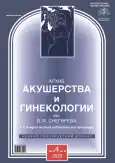Mitochondrial diseases: causes and solutions (literature review)
- 作者: Ivanova E.D.1, Belousova V.S.1, Skorobogatova O.V.1, Bogomazova I.M.1, Timokhina E.V.1, Pesegova S.V.1
-
隶属关系:
- I.M. Sechenov First Moscow State Medical University
- 期: 卷 10, 编号 4 (2023)
- 页面: 243-251
- 栏目: Literature reviews
- URL: https://ogarev-online.ru/2313-8726/article/view/219510
- DOI: https://doi.org/10.17816/2313-8726-2023-10-4-243-251
- ID: 219510
如何引用文章
详细
The discovery of mitochondrial desoxyribonucleic acid (DNA) mutations and the association of these mutations with the development of severe, sometimes, fatal diseases led to new forms of reproductive technologies, i.e., mitochondrial replacement therapy. Currently, researchers are investigating three main methods of mitochondrial replacement therapy: pronuclear transfer, maternal spindle transfer, and polar body genome transfer. Thanks to these methods, the transmission of faulty mitochondrial DNA from the mother to the next generation can be prevented, with the main goal of developing a healthy offspring free of genetic disorders and lethal mitochondrial diseases. However, the implementation of these technologies has raised several moral, social, and cultural concerns, as it marks the emergence of a child with genetic material from three parents for the first time. This review presents an objective summary of the causes of mitochondrial disorders and various techniques employed in mitochondrial replacement therapy, along with their outcomes.
作者简介
Ekaterina Ivanova
I.M. Sechenov First Moscow State Medical University
Email: katerina.dip.13@gmail.ru
ORCID iD: 0009-0006-0016-4701
Student
俄罗斯联邦, MoscowVera Belousova
I.M. Sechenov First Moscow State Medical University
编辑信件的主要联系方式.
Email: belousova_v_s@staff.sechenov.ru
ORCID iD: 0000-0001-8332-7073
MD, Dr. Sci. (Med.), Assistant Professor, Professor of the Department of Obstetrics, Gynecology and Perinatology
俄罗斯联邦, MoscowOksana Skorobogatova
I.M. Sechenov First Moscow State Medical University
Email: aisha27_sum@mail.ru
ORCID iD: 0009-0009-8664-3536
Graduate Student
俄罗斯联邦, MoscowIrina Bogomazova
I.M. Sechenov First Moscow State Medical University
Email: bogomazova_i_m@staff.sechenov.ru
ORCID iD: 0000-0003-1156-7726
MD, Cand. Sci. (Med.), Assistant Professor
俄罗斯联邦, MoscowElena Timokhina
I.M. Sechenov First Moscow State Medical University
Email: timokhina_i_m@staff.sechenov.ru
ORCID iD: 0000-0001-6628-0023
MD, Dr. Sci. (Med.), Assistant Professor, Professor of the Department
俄罗斯联邦, MoscowSvetlana Pesegova
I.M. Sechenov First Moscow State Medical University
Email: pesegova_s_v@staff.sechenov.ru
ORCID iD: 0000-0002-1339-5422
MD, Cand. Sci. (Med.), Assistant Lecturer
俄罗斯联邦, Moscow参考
- Holt IJ, Harding AE, Morgan-Hughes JA. Deletions of muscle mitochondrial DNA in patients with mitochondrial myopathies. Nature. 1988;331(6158):717–719. doi: 10.1038/331717a0
- Wallace DC, Singh G, Lott MT, et al. Mitochondrial DNA mutation associated with Leber’s hereditary optic neuropathy. Science. 1988;242(4884):1427–1430. doi: 10.1126/science.3201231
- Kang E, Wu J, Gutierrez NM, et al. Mitochondrial replacement in human oocytes carrying pathogenic mitochondrial DNA mutations. Nature. 2016;540(7632):270–275. doi: 10.1038/nature20592
- Tavare A. Scientists are to investigate “three parent IVF” for preventing mitochondrial diseases. BMJ. 2012;344:e540. doi: 10.1136/bmj.e540
- Pozdnyakova AA, Volodina M, Rshtuni SJ, Marchenko LA, Vysokikh MYu. Mitochondrial dysfunction as possible cause of impaired follicular development and steroidogenesis in premature ovarian insufficiency. Obstetrics, Gynecology and Reproduction. 2015;9(4):55–65. (In Russ). doi: 10.17749/2070-4968.2015.9.4.055-056
- Craven L, Tang MX, Gorman GS, De Sutter P, Heindryckx B. Novel reproductive technologies to prevent mitochondrial disease. Hum Reprod Update. 2017;23(5):501–519. doi: 10.1093/humupd/dmx018
- Fragouli E, McCaffrey C, Ravichandran K, et al. Clinical implications of mitochondrial DNA quantification on pregnancy outcomes: a blinded prospective non-selection study. Hum Reprod. 2017;32(11):2340–2347. doi: 10.1093/humrep/dex292
- Xu L, Shi R. Weigh and wait: the prospect of mitochondrial gene replacement. Hum Fertil (Camb). 2016;19(4):222–229. doi: 10.1080/14647273.2016.1230234
- DiMauro S. A Brief History of Mitochondrial Pathologies. Int J Mol Sci. 2019;20(22):5643. doi: 10.3390/ijms20225643
- Rebolledo-Jaramillo B, Su MS, Stoler N, et al. Maternal age effect and severe germ-line bottleneck in the inheritance of human mitochondrial DNA. Proc Natl Acad Sci U S A. 2014;111(43):15474–15479. doi: 10.1073/pnas.1409328111
- Mitalipov S, Amato P, Parry S, Falk MJ. Limitations of preimplantation genetic diagnosis for mitochondrial DNA diseases. Cell Rep. 2014;7(4):935–937. doi: 10.1016/j.celrep.2014.05.004
- Rebrikov DV. Human Genome Editing // Bulletin of RSMU. 2016;(3):4–15. (In Russ). doi: 10.24075/brsmu.2016-03-01
- Wolf DP, Mitalipov N, Mitalipov S. Mitochondrial replacement therapy in reproductive medicine. Trends Mol Med. 2015;21(2):68–76. doi: 10.1016/j.molmed.2014.12.001
- Haimes E, Taylor K. Sharpening the cutting edge: additional considerations for the UK debates on embryonic interventions for mitochondrial diseases. Life Sci Soc Policy. 2017;13(1):1. doi: 10.1186/s40504-016-0046-2
- Sharma H, Singh D, Mahant A, et al. Development of mitochondrial replacement therapy: A review. Heliyon. 2020;6(9):e04643. doi: 10.1016/j.heliyon.2020.e04643
- Nagpal M, Kaur S. Recent Advancement in Human Reproduction Three-parent Babies: A Technique to Neutralize Mitochondrial Disease Load ― A Boon or a Bane for Society? Curry Trends Diagn Treat. 2017;1(2):100–103. doi: 10.5005/jp-journals-10055-0024
- Labarta E, de Los Santos MJ, Escriba MJ, Pellicer A, Herriaz S. Mitochondria as a tool for oocyte rejuvenation. Fertil Steril. 2019;111(2):219–226. doi: 10.1016/j.fertnstert.2018.10.036
- Jose F, Lekshmi S, Lal S, Jjiju V, Abraham E. Three parent child: a review. Inter J Novel Trends in Pharmaceutical Sciences. 2017;7(2):54–56.
- Schmerler S, Wessel GM. Polar bodies ― more a lack of understanding than a lack of respect. Mol Reprod Dev. 2011;78(1):3–8. doi: 10.1002/mrd.21266
- Afanas’ev YuI, Yurina NA, Kotovskii EF, et al. Histology, Embryology, Cytology: Textbook. 6th ed., reprint. and add. Afanas’ev YuI, Yurina NA, editors. Chapter 20. The Sexual System. Moscow; 2012. (In Russ). (electronic version: http://vmede.org/sait/?id=Gistologiya_embriol_cit_afanasev_2012&menu=Gistologiya_embriol_cit_afanasev_2012&page=24)
- Wang T, Sha H, Ji D, et al. Polar body genome transfer for preventing the transmission of inherited mitochondrial diseases. Cell. 2014;157(7):1591–1604. doi: 10.1016/j.cell.2014.04.042
- Ma H, O’Neil RC, Gutierrez NM, et al. Functional Human Oocytes Generated by Transfer of Polar Body Genomes. Cell Stem Cell. 2017;20(1):112–119. doi: 10.1016/j.stem.2016.10.001
- Hamzelou J. ‘3-parent baby’ Success. New Sci. 2016;232(3093):8–9. doi: 10.1016/s0262-4079(16)31769-9
- Reardon S. Genetic details of controversial ‘three-parent baby’ revealed. Nature. 2017;544(7648):17–18. doi: 10.1038/nature.2017.21761
- Dockrill P. World-First in Ukraine as ‘Three-Parent Baby’ Born to an Infertile Couple. Science Alert. 2017 January 19 [cited 2023 Seрt. 25]. Available from: https://www.sciencealert.com/world-first-in-ukraine-as-three-parent-baby-born-to-an-infertile-couple/
- Dahiya N, Garg S. Three-parent baby: Is it ethical? Indian J Med Ethics. 2018;3(2):169. doi: 10.20529/IJME.2017.097










